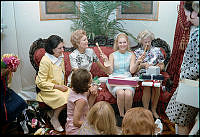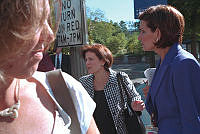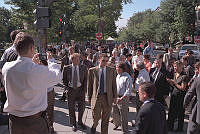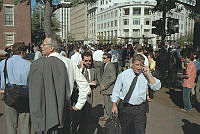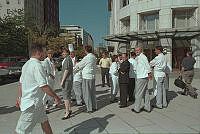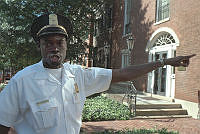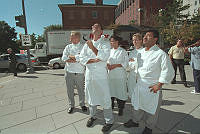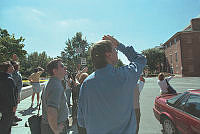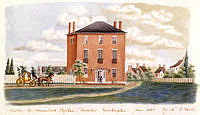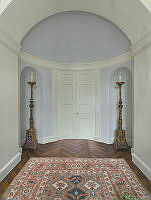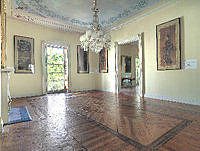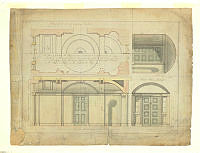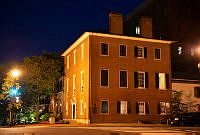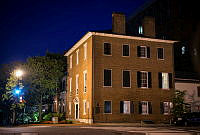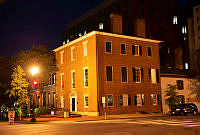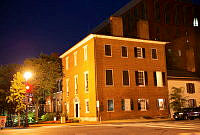Before the U.S. Chamber of Commerce Building was built during 1922-25, a simple three-and-a-half story brick home stood in its place at the corner of H Street and Connecticut Avenue. The home's original owner was Daniel Webster, a Congressman from both New Hampshire and Massachusetts and a Senator from Massachusetts who also served as Secretary of State for three Presidents.
During his time in Washington, D.C., Webster purchased and then freed a number of enslaved African Americans, including an enslaved man named Paul Jennings, who had previously been owned by fellow Lafayette Square resident Dolley Madison. In March of 1847, Webster signed a work agreement with Jennings stating he had "paid $120 for the freedom of Paul Jennings" and that Jennings would repay the sum by working for Webster for $8 a month.
While Jennings was in Webster's household, he took part in a daring plot to free more than 70 enslaved African Americans in the capital. According to a book published in 1930 called Fugitives of the Pearl, sometime in 1847 Paul Jennings met a sea captain named Daniel Drayton, who was sympathetic to the plight of the enslaved. Jennings and Drayton began planning for a group of enslaved and free African Americans to flee Washington aboard a boat and Jennings helped spread the word about the escape in the city's African American community.
On the night of April 15, 1848, a borrowed schooner named the Pearl slipped away from the 7th Street wharf and headed south down the Potomac, bound for the Chesapeake Bay and then north up the Delaware River to New Jersey. The Pearl only made it 144 miles away from Washington when it encountered dangerously high winds and had to drop anchor near Point Lookout in Maryland. There it was overtaken by a group of slaveowners who had learned of the escape route. Though some of those aboard the Pearl were legally free, all were jailed and many were sold. Paul Jennings went on to work as a messenger in the Department of the Interior and his role in the escape plot was not publicly known until the publication of Fugitives of the Pearl in 1930.
The author of this book, John Paynter, was related to three of the escapees and utilized family recollections to write about the incident. According to Paynter, Jennings planned to leave the city on the Pearl and left a letter for his employer, Daniel Webster, explaining that a "deep desire to be of help to my poor people" motivated his participation in the escape. However, according to Paynter, Jennings decided that it would be dishonorable to leave before his debt to Webster was repaid, so he returned to Webster's residence and retrieved the un-read letter.
By 1851 Paul Jennings had gained his freedom and worked the Pension Office, a section of the Department of Interior. He also purchased in 1854 a home with his new wife Desmonda, and they resided at L and 18th Street, walking distance from the White House. Sadly, his first wife had passed away in 1843. However by 1856, all his children were free and living with him. In 1865, Jennings, wrote a memoir A Colored Man's Reminiscences of James Madison. This book was the first memoir of life in the White House written by someone who had lived there and chronicles his extraordinary journey from enslaved domestic to a free man working for the government and owning his own property.















